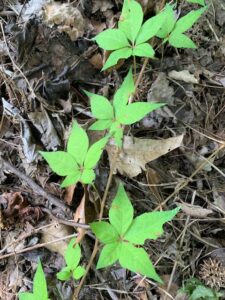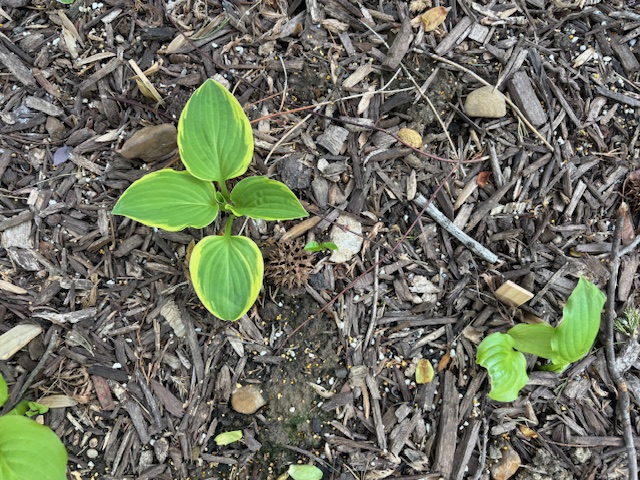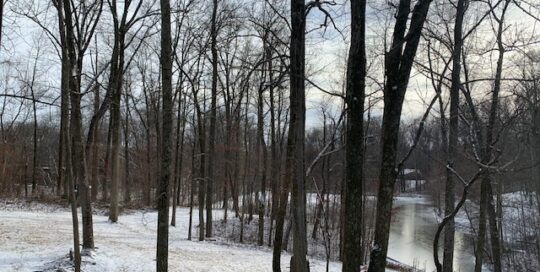Virginia Creeper – Good and Not-So-Good
Views: 913

Virginia Creeper (Parthenocissus quinquefolia) is also known as Victoria Creeper, five-leaved ivy, five-finger and woodbine. It’s a hardy vine (growing zones 3 to 10) native to the eastern United States.
It’s sometimes mistaken for poison ivy or poison oak. Virginia Creeper has five leaves (see photo) while poison ivy and poison oak have three leaves. I have seen very young Virginia Creeper vines with only three leaves, but they quickly gain the other two leaves. It is also mistaken for its very close cousin Parthenocissus inserta (syn. Parthenocissus vitacea), also known as thicket creeper, false Virginia creeper, woodbine, or grape woodbine. This “kissing cousin” also has five compound leaflets, oxalic acid in the leaves and berries and seems to do much the same as the Virginia Creeper. The way to tell these two apart? The P. inserta has tendrils more like a grape vine, while P. quinquefolia has tendrils with sticky, disk-like endings, allowing it to climb almost anything.
Virginia Creeper Benefits
So…what’s good about Virginia Creeper? It’s very hardy, needs zero care, grows rapidly; it’s happy in any type of soil (clay, sand or loam), grows well in a wide pH range, and is shade and salt tolerant. Its small, greenish-white flowers form dark blue berries which are attractive to birds, and it really makes a show during autumn, when its leaves will turn shades of brilliant red and burgundy.
So…what’s not-so-good about Virginia Creeper? It’s really, really hardy, grows really, really fast, and volunteers just about anywhere there’s soil (including my gravel driveway). It’s a climbing vine and will cling to your house siding, bricks, stones, whatever. If you like it, let it grow on a trellis, or arbor – NEVER on the siding of a building or you’ll be sorry – it’s hard to remove. It will grow up trees, blocking the trees’ light – so keep it out of your favorite trees. And, the leaves and berries contain oxalic acid, making it toxic to humans. Some people are sensitive to it because of the oxalic acid and will break out in a rash (use gloves, so you don’t find out the hard way).
Propagation
Virginia Creeper can be propagated by cuttings or from seeds. However, I get enough volunteers. I’ll never need to do that. My big problem is keeping it under control. The young vines, still crawling along the ground, I can pull up by hand if the soil is reasonably moist. When my soil is dry, it becomes like an adobe brick. I can’t pull anything out of it! In that case, I’ll clip the vine off at soil level and carefully spray the cut stem with glyphosate.
Cutting Back Virginia Creeper
If there’s a vine beginning to grow up a tree and I don’t want it to, I’ll pull the vine off the trunk manually, if it’s small enough. The big vines get woody and can be one or two inches in diameter. That’s when I get out my trusty hand ax and chop the vine at the base, then quickly hit it with brush-killer strength glyphosate. I prefer not to use an herbicide, but if I don’t, the vine is pretty sure to grow back. I use herbicide when I feel I have to do so and try to only apply it to the freshly cut stems.
There are some cultivars more polite than common Virginia Creeper; they are said to be less aggressive, and they are quite attractive. Look for cultivars such as Engelmanii, Monham (or Star Showers), Variegata, Troki (or Red Wall) and Yellow Wall.
As always,
Stay Green, Good Friends!
Meet Dona Bergman
Dona Bergman is a founding member, Southwest Indiana Chapter of the Indiana Native Plant & Wildlife Society, and an Advanced Master Gardener.







